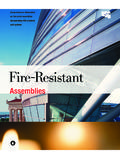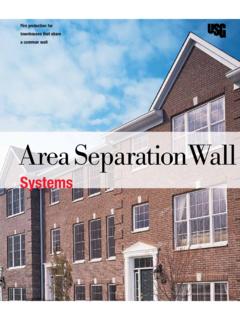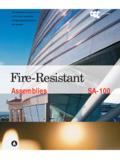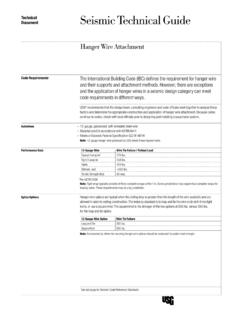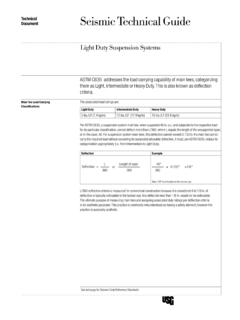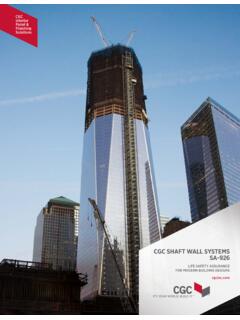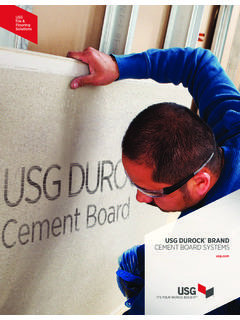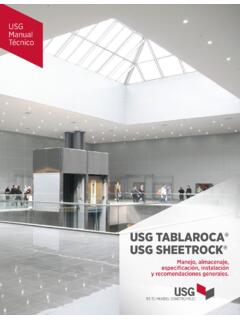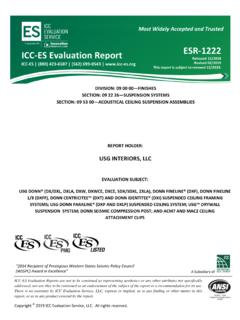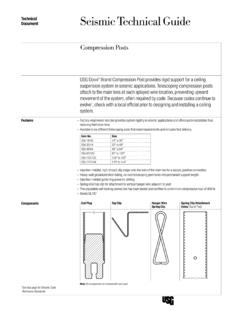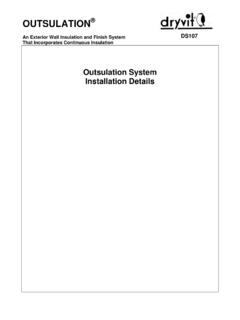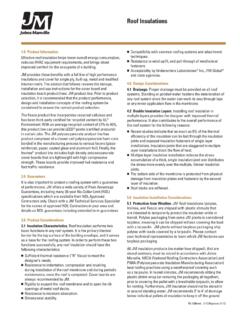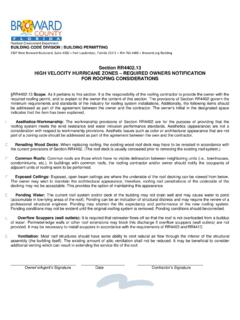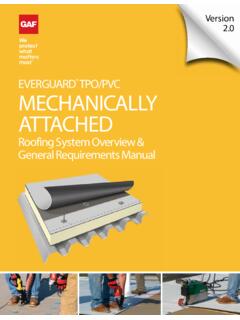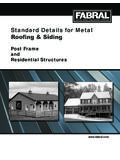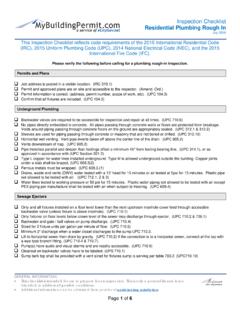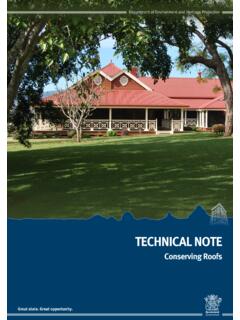Transcription of Plaster Systems Brochure (English) - SA920 - USG
1 Fire performance, beauty and durability for interior residential and commercial spacesPlaste r Systems Plaster Systems offer a number of practical and aesthetic advantages over gypsum panels and other interior finishes. Plaster permits a great deal of design flexibility, combined with fire performance, strength and durability. These factors improve lifecycle economy when compared to drywall. Because Plaster Systems are truly monolithic, they provide surfaces that minimize or eliminate irregularities associated with standard drywall construction (ridging, boarding, nail pops, etc.). Beauty and Strength 3 USG Plaster SystemsUser s Guide This Brochure explains: The components of a Plaster system The difference between conventional Plaster Systems and one- or two-coat veneer Plaster Systems The attributes of conventional and veneer Plaster systemsPagesUnderstand Your System 4 Overview Applications Components Select Your System 19 Product Data Performance Testing Performance SelectorDesign Your System 42 Design Details Good Design PracticesSpecify Your System 54 Application Guide SpecificationsFor More Information Technical Service 800
2 WebSite Plaster Systems provide improved fire and abuse resistance over conventional drywall Systems . In addition, they allow for a variety of aesthetic applications and better acoustic performance. Depending on the application, either conventional or veneer Plaster Systems can be used. Conventional Plaster Systems use a thicker Plaster coat over a metal lath and provide increased fire and wear resistance, while one- or two-coat veneer Systems are faster and less expensive to apply. Plaster Systems typically consist of a substrate, a basecoat Plaster and a finish Substrates can be either metal lath, unit masonry, monolithic concrete, or a recommended gypsum base , cement board or gypsum fiber Plasters Basecoat plasters provide strength and rigidity, compensating for substrate imperfections and resulting in even, straight walls and ceilings.
3 In conventional Plaster Systems , basecoat plasters are generally applied 1/29 to 19 thick, in one or two separate applications, depending on the substrate. In veneer Plaster Systems , basecoat plasters are applied approximately 1/169 thick. Basecoat plasters are supplied in two forms: mill aggregated (which requires only mixing with water), and neat (which requires the addition of aggregate at the job site).Finish Plasters In conventional Plaster Systems , finish plasters are applied to properly prepared gypsum basecoat plasters to form the wearing surface of walls and ceilings. In veneer finish applications, finish plasters can be applied to any properly prepared basecoat or directly to a gypsum base . Finishes are approximately 1/169 to 3/329 thick, and can be smooth troweled, floated or textured. Finish plasters are supplied in two forms: factory-prepared finishes require only the addition of water, while gauging plasters require the addition of lime putty.
4 Plaster Systems provide improved fire and abuse resistance over conventional drywall Systems . In addition, they allow for a variety of aesthetic applications and better acoustic performance. Depending on the application, either conventional or veneer Plaster Systems can be used. Conventional Plaster Systems use a thicker Plaster coat over a metal lath and provide increased fire and wear resistance, while one- or two-coat veneer Systems are faster and less expensive to apply. Plaster Systems typically consist of a substrate, a basecoat Plaster and a finish Substrates can be either metal lath, unit masonry, monolithic concrete, or a recommended gypsum base , cement board or fiber-reinforced gypsum Plasters Basecoat plasters provide strength and rigidity, compensating for substrate imperfections and resulting in even, straight walls and ceilings.
5 In conventional Plaster Systems , basecoat plasters are generally applied 1/29 to 19 thick, in one or two separate applications, depending on the substrate. In veneer Plaster Systems , basecoat plasters are applied approximately 1/169 thick. Basecoat plasters are supplied in two forms: mill aggregated (which requires only mixing with water), and neat (which requires the addition of aggregate at the job site).Finish Plasters In conventional Plaster Systems , finish plasters are applied to properly prepared gypsum basecoat plasters to form the wearing surface of walls and ceilings. In veneer finish applications, finish plasters can be applied to any properly prepared basecoat or directly to a gypsum base . Finishes are approximately 1/169 to 3/329 thick, and can be smooth troweled, floated or textured. Finish plasters are supplied in two forms: factory-prepared finishes require only the addition of water, while gauging plasters require the addition of lime putty.
6 4 USG Plaster SystemsOverview 5 USG Plaster SystemsConventional Three-CoatPlaster Systems Conventional Plaster Systems are the best choice to attain a uniform, monolithic, blemish-free, smooth surface with good to excellent wear resistance based on the type of finish Plaster . These Systems make intricate architectural details and ornamental shapes possible. Conventional Plaster Systems offer excellent acoustical performance, proven fire resistance, increased abuse resistance, design flexibility for curves and compound surfaces, and lifecycle cost reduction due to lower maintenance costs. A three-coat conventional Plaster system consists of a thicker Plaster coat (from 5/89 to 19) over a substrate, two base coats (a scratch coat and a brown coat) and a finish Plaster .
7 Two-Coat A two-coat conventional Plaster system uses Rocklath Plaster base instead of metal lath, one thickness of basecoat Plaster , and a finish that replaces the scratch coat and brown coat. finishbasecoat brown coatbasecoat scratch coatmetal lathfinishbasecoatgypsum lath 6 USG Plaster SystemsOverviewVeneer Plaster Two-Coat Systems While less expensive than conventional Plaster Systems , two-coat veneer Plaster Systems provide distinct advantages over single-coat veneer Plaster and drywall Systems , including a more monolithic surface with improved appearance under oblique lighting conditions. Two-coat veneer Plaster Systems allow truer wall surfaces and greater resistance to nail pops, joint ridging and joint shadowing/banding, with a wider choice of finishing materials and texture options.
8 Two-coat veneer Plaster Systems use a finish Plaster on top of a basecoat Plaster . One-Coat One-coat veneer Plaster Systems provide a monolithic, smooth or textured appearance with moderate to superior surface hardness, depending on the product used. One-coat veneer Plaster Systems can be applied directly to the Plaster base and can be ready for further decoration in as little as 24 hours if completely dry. Fast completion can often shorten construction time, making the single-coat veneer Plaster system a very economical upgrade from standard gypsum drywall. One-coat veneer Plaster Systems use one coat of 1/169 to 3/329 finish Plaster directly on top of a base , without the use of a basecoat. finishbasecoatgypsum Plaster basefinishgypsum Plaster baseDecorative Interior Colors and TexturesFinish System The USGTM Decorative Interior Finish System permits a limitless variety of colors and textures to be easily applied to interior drywall and other wall surfaces, using techniques similar to those used in Plaster work.
9 It offers an alternative to other upscale decorative finishes at a lower installed cost. The USG Decorative Interior Finish System consists of specially developed USG Plaster Bonder, DiamonD Brand Interior Finish Plaster , coloRtRenD Colorants and USG Decorative Interior Finish Sealer. Designed for use by professional applicators with basic trowel skills, the system can be applied to new drywall, gypsum Plaster and properly prepared painted wall surfaces. For more information, see P759, USG Decorative Interior Finish System, and PM12, Recommendations for Mixing and Applying DIFS. Residential Application Commercial Application 7 USG Plaster Systems 8 USG Plaster SystemsApplicationsConventional Conventional Plaster Systems provide the highest quality finish and the capability to create complex high-end surfaces Plaster Systems such as barrel vaults and domes.
10 In addition, secured storage areas for homes, bank vaults, furriers, jewelers, correctional facilities, and embassies can be built with StRuctocoRe Brand Security Wall Systems . Wood Framed For wood-framed construction, a conventional Plaster system provides: Fire resistance Improved acoustical separation between rooms Steel Framed For steel-framed construction, a conventional Plaster system provides: Fire protection for beams and columns Durability and reduced lifecycle costs in high-usage applications Improved performance for acoustical applications such as concert halls and theaters Veneer Wood Framed Plaster Systems For wood-framed construction, a veneer Plaster system provides: Durability, including abrasion and crack resistance, for high-traffic areas 1-hour and 2-hour fire resistance ratings, depending on components used Sound control up to 52 STC with the use of resilient channels and sound insulation Easy application and fast drying for surfaces that are ready for next-day decorating or painting Steel Framed For steel-framed construction, a veneer Plaster system provides.
